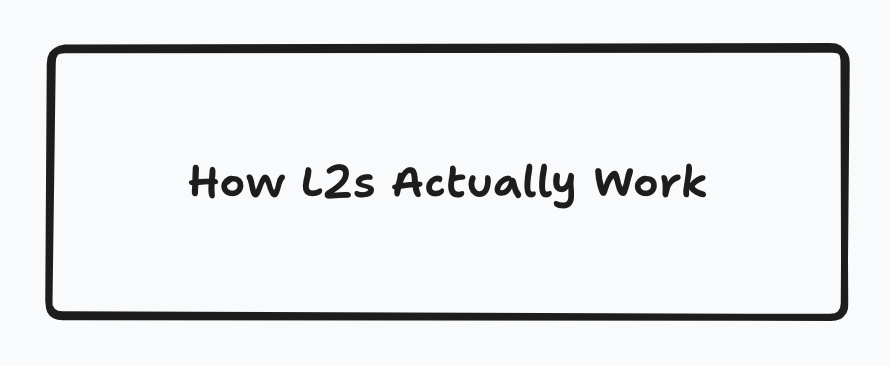Why are there so many L2s coming out? Do we need yet another chain? When will it all end?
Here are a couple of under-discussed reasons why you're still seeing more L2s, and why this will end up being a net positive for users.
- Technical Experimentation
To me, this is the most interesting aspect of L2s, and what really distinguishes them from L1s. You see, an L2 that settles to Ethereum can modify its VM however it wants as long as it can prove to the L1 that state transitions are valid. Right now, most rollups use the EVM and try to keep the same experience as ETH L1 (but cheaper and faster).
However, we're starting to see an increase in rollups using alternate VMs that provide different benefits including the ability to write contracts in other programming languages, extra safety, privacy cheaper fees, or more throughput. Examples include @arbitrum Stylus, @movementlabsxyz, @aztecnetwork, several SVM rollups, and more.
There are also a couple teams looking to push the boundaries of what the EVM can be on high performance hardware. @base has already increased its limits on a live chain. @megaeth_labs and @paradigm have put out excellent research exploring ways to optimize every aspect of the EVM. I expect an EVM rollup (MegaETH?) to reach absurdly high performance by the end of this year.
- Cultural Extensions
I'm not going to take credit for this term because I stole it from Vitalik's last blog post. Here's his quote on L2 cultures: "Layer 2s allow subcultures to emerge that are armed with substantial resources, and a feedback loop that forces them to learn and adapt in order to be effective in the real world".
Each successful chain has had its own identity/usecase that it's built around. Here are some examples:
Just like there is still a lot of room for technical innovation, I believe there is still a lot of room for cultural innovation to happen on L2s. Very few L2s have been hyper focused on community building and tailoring experiences for end users. I expect more L2s to come out that are focused on galvanizing specific communities and building better flows for users.
- What this all means
The end user is going to win. We are going to continue to see lower fees, faster blocktimes, and more tailored experiences. There will apps built for specific VMs that weren't possible on the standard EVM previously. There will be chains built for every community imaginable.
Here are a couple of under-discussed reasons why you're still seeing more L2s, and why this will end up being a net positive for users.
- Technical Experimentation
To me, this is the most interesting aspect of L2s, and what really distinguishes them from L1s. You see, an L2 that settles to Ethereum can modify its VM however it wants as long as it can prove to the L1 that state transitions are valid. Right now, most rollups use the EVM and try to keep the same experience as ETH L1 (but cheaper and faster).
However, we're starting to see an increase in rollups using alternate VMs that provide different benefits including the ability to write contracts in other programming languages, extra safety, privacy cheaper fees, or more throughput. Examples include @arbitrum Stylus, @movementlabsxyz, @aztecnetwork, several SVM rollups, and more.
There are also a couple teams looking to push the boundaries of what the EVM can be on high performance hardware. @base has already increased its limits on a live chain. @megaeth_labs and @paradigm have put out excellent research exploring ways to optimize every aspect of the EVM. I expect an EVM rollup (MegaETH?) to reach absurdly high performance by the end of this year.
- Cultural Extensions
I'm not going to take credit for this term because I stole it from Vitalik's last blog post. Here's his quote on L2 cultures: "Layer 2s allow subcultures to emerge that are armed with substantial resources, and a feedback loop that forces them to learn and adapt in order to be effective in the real world".
Each successful chain has had its own identity/usecase that it's built around. Here are some examples:
Just like there is still a lot of room for technical innovation, I believe there is still a lot of room for cultural innovation to happen on L2s. Very few L2s have been hyper focused on community building and tailoring experiences for end users. I expect more L2s to come out that are focused on galvanizing specific communities and building better flows for users.
- What this all means
The end user is going to win. We are going to continue to see lower fees, faster blocktimes, and more tailored experiences. There will apps built for specific VMs that weren't possible on the standard EVM previously. There will be chains built for every community imaginable.

• • •
Missing some Tweet in this thread? You can try to
force a refresh

















